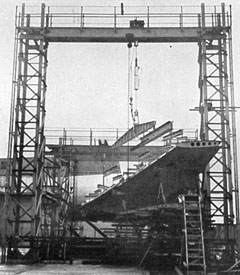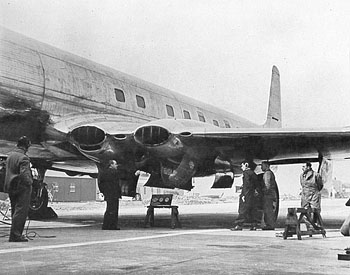

Development
In November 1949, the prototype flew from Edinburgh to Brighton at 40,000 ft, averaging 530 mph, then from Shetland to Hatfield, averaging 590 mph. Economical cruising was established as 465 mph @ 35,000 ft, and all-up weight was 110,000 lb.
In March 1950, a second prototype began flights to continental destinations. Between 16 March and 24 April, FAI Class C1 records were secured, with full payloads, between London-Rome, London-Copenhagen and London-Cairo. The combined average for all flights was 435 mph from engine start to engine stop.
Passengers were delighted by the comfort at high altitude and the lack of noise and vibration. Having low wing loading and the main masses close to the centre of gravity, it was a remarkably stable and responsive aircraft, even in rough conditions.
The Comet exceeded economic expectations, too. Although it was 50% more expensive to buy than piston engined airliners, and consumed twice as much fuel, it was 20% cheaper overall. Jet engines required less frequent maintenance, increasing utilisation. After the first year of operations, BOAC reported that five Comets could do the work of eight conventional airliners.
The Comet had been designed to handle well at low speed. Although useful, this compromised top speed, and ultimate efficiency. In retrospect, the British underestimated the eagerness with which airports would extend runways to join the jet age. The Americans waited until after the Comet was in service, and were able to make a more informed judgement. The clock was ticking: de Havilland had a window of 5-6 years in which to establish the Comet as the World's favourite airliner.
Commercial operations began with BOAC on 2nd February 1952. For two years the Comet was a roaring success, gaining popularity all over the World. A more powerful Comet 2 prototype was being tested, and plans for a larger, trans-Atlantic, Comet 3 had been revealed. On 20th October 1952, Pan-Am became the first American operator to sign-up, placing an order for three Comet 3s and an option on a further seven the following year. The future for de Havilland couldn’t have looked brighter.
